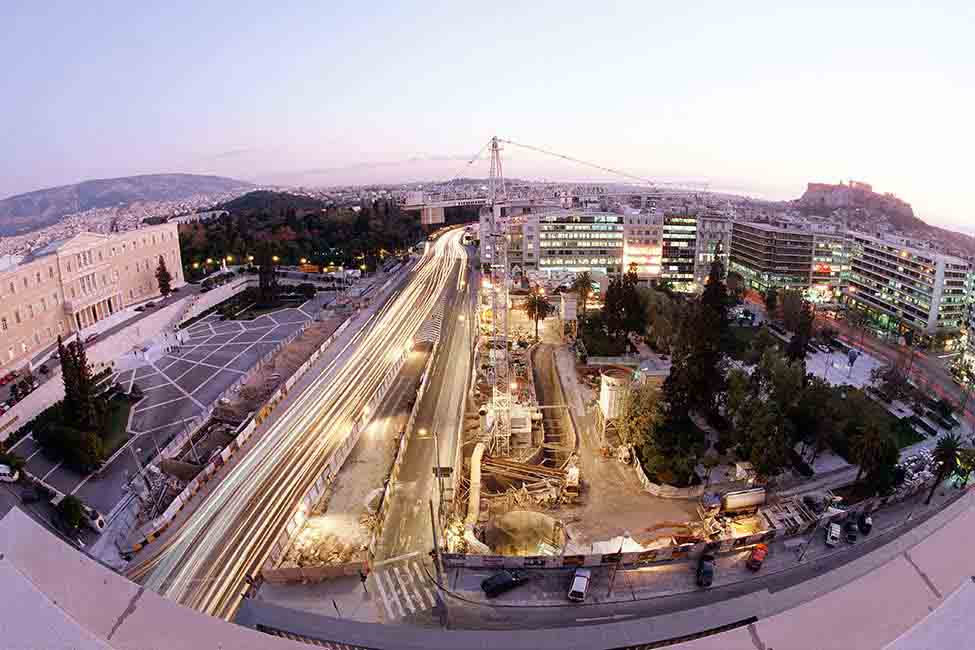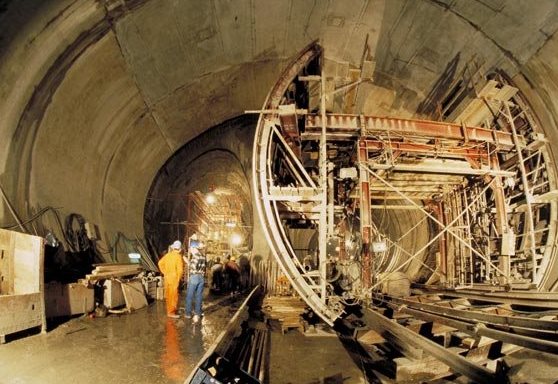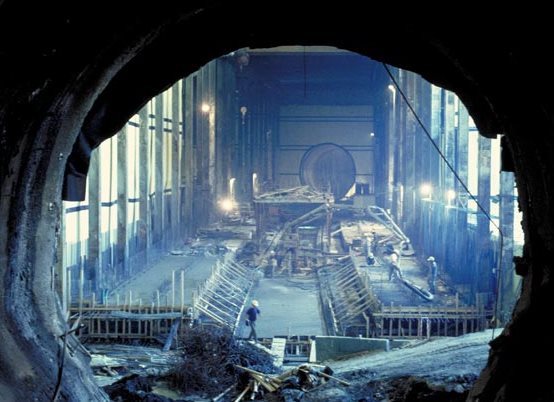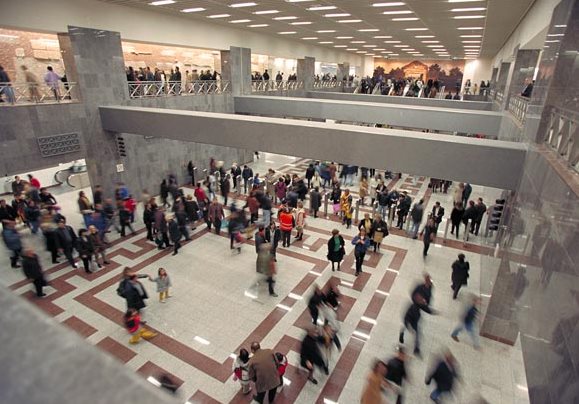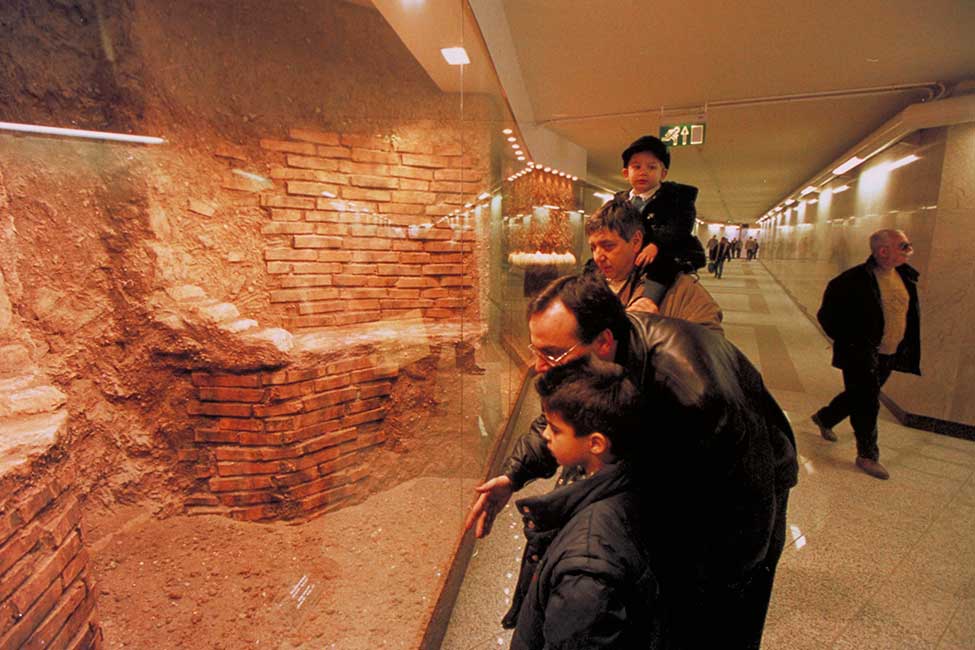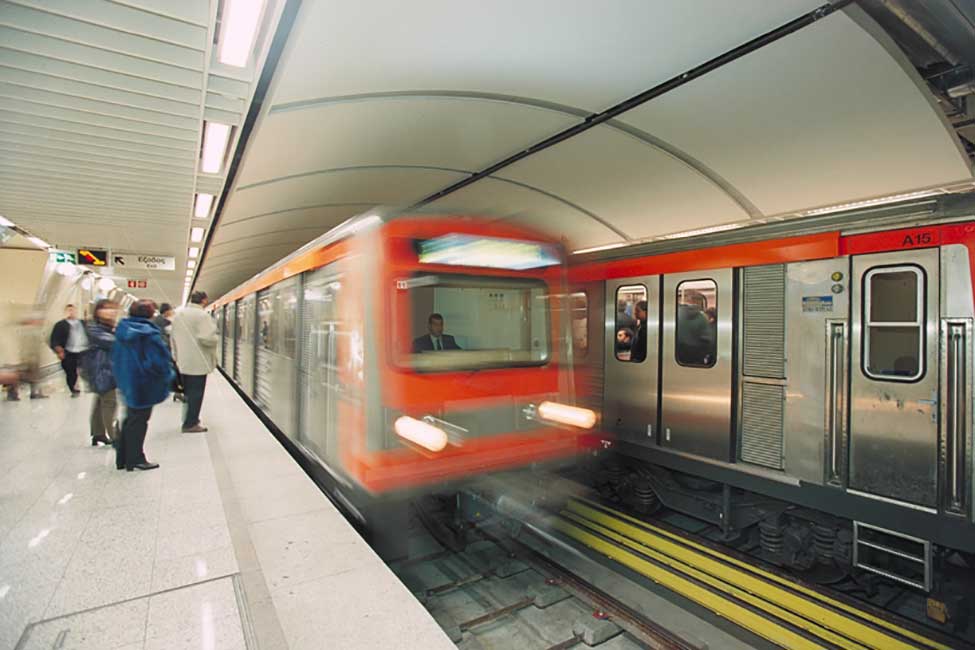The construction of a metro system in Athens had been announced 22 times over the course of decades before this project began. Many doubted it would or could be done—but it was.
Ahead of the 2004 Summer Olympics, a Bechtel-led team delivered for Athens two new subway lines. Ever since, the Athens Metro has provided passengers with dramatically shorter commute times, speeding travelers at up to 60 miles (90 kilometers) an hour underground. It has relieved congestion, boosted commerce, bolstered tourism, and decreased pollution by removing some 375,000 cars a day from the roads.
Bechtel managed an engineering and construction consortium composed of 22 companies—Greek, French, German, and others.
Digging up the past
Archaeology is a major challenge when you’re constructing in any city, but it’s especially true in Athens. Because the city is 3,000 years old, much of its history is buried. Greek archaeologists preceded construction of every tunnel shaft and station with a survey, and project engineers assisted by providing georadar underground images. When they discovered artifacts—either during the surveys or construction—work stopped until the finds could be safely retrieved.
"Engineers count in days, while archaeologists count in centuries," said Leonides Kikiras, chairman of Attiko Metro, the Greek state-backed project owner. "But the two groups...realized that they offered each other something valuable. The archaeologists lent us their knowledge of history, which made planning easier, and we offered the scholars a wealth of findings.
Artifacts from the classical Greek, Roman, and Byzantine periods came from sites flanking the Acropolis. The Bechtel-led project team partnered with the Greek Ministry of Culture to preserve 30,000 artifacts. Most of the system's 28 stations display these ancient treasures. The Cycladic Arts Museum of Athens also displays many of the finds.
Challenging work
Tunneling crews encountered unexpected soft and unstable soil, the result of ancient water wells, old riverbeds, and illegal underground sewage connections. And certain portions of shallow tunnel passed beneath weak structures, such as ancient churches and monuments, at risk of collapsing.
The project team used three tunneling methods, including tunnel-boring machines, each geared to different conditions. And Bechtel developed a new approach: 'pilot tunnels', small-diameter exploratory cavities dug in advance of the main tubes. The pilot tunnels enabled engineering specialists to sample soils and determine ground quality before full-blown excavation. To fill cavities and stabilize soils, crews injected grout.


